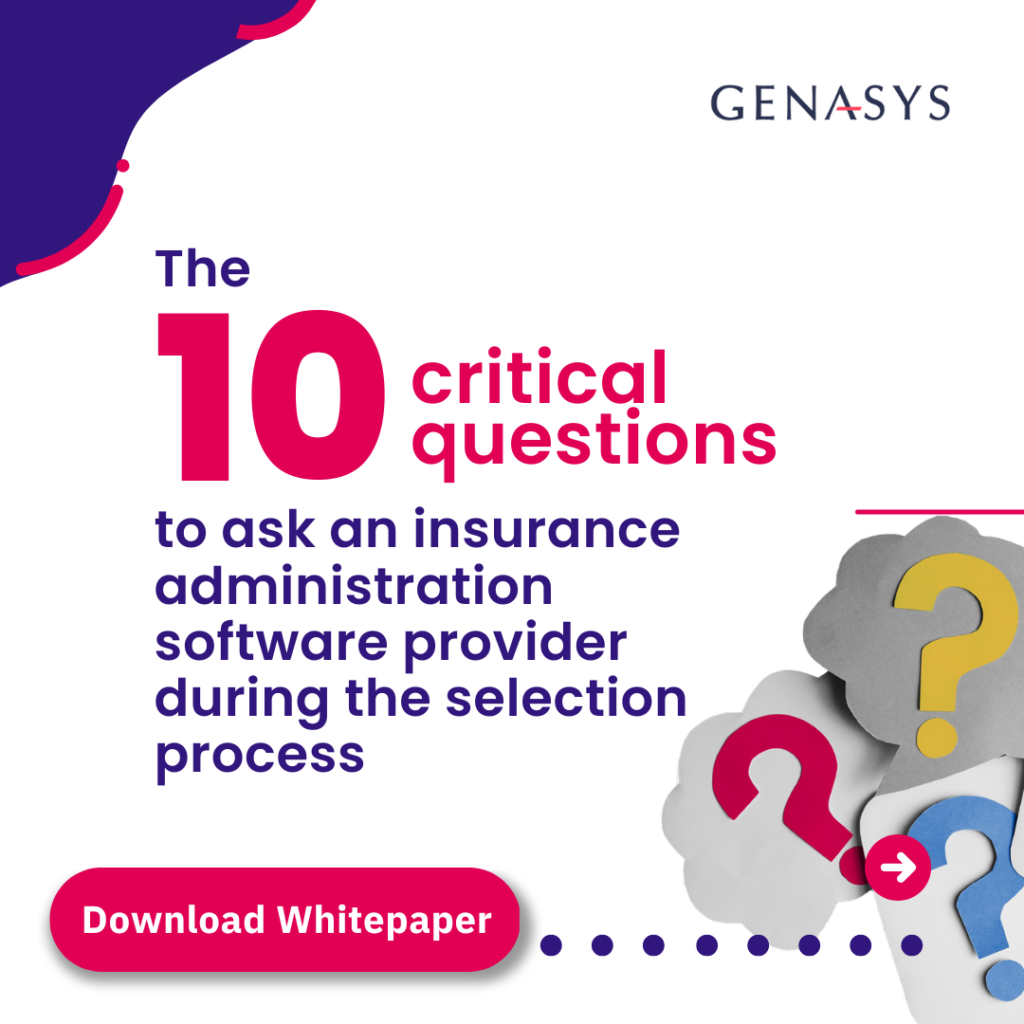Gavin Peters, VP of Marketing at Genasys Technologies

Genasys recently prepared a white paper, specifically around choosing your insurance administration software, culminating in 10 critical questions that insurance administration software providers need to clarify. We will unpack these 10 questions in two instalments.
Purpose of the white paper – There are a couple of reasons why we prepared the paper. Firstly, we spend quite a bit of time looking at the future of the industry and exciting topics like AI. That is where most content created by technology companies tends to migrate towards, because it is a natural thing to get excited about the future. But we did notice that there is a lack of some of the important core product information, to help companies with their buying decision.
We decided to create a useful, practical guide to the kind of questions you should be asking when choosing your insurance software, whether you are looking at functionality that we will deliver here and now, or at future proofing your business.
Secondly, on a more practical level, we get asked these questions all the time. When we are invited to RFP (Request for Proposal) processes or RFI (Request for information) processes we get asked to input into that process. We realize that people buying the software might be looking at insurance software or technology for the first time, or they may be coming from old legacy technology or even starting a new business.
It is about helping people understand what the questions are that they need to ask, complimenting us going down there and finding out ourselves. So, we created an easy to digest, practical guide to helping people understand what the questions are that they should be asking and the factors they should be considering when buying an insurance software.
Things change constantly a lot, and it is good to take a step back and think about the important things that will influence that decision.

First five of ten questions to ask your software provider
Question One: Is the insurance administration functionality fit for purpose?
You should delve down when looking at managing your insurance business. Does it have the core functionality you are going to need that is vital for the here and now? When you are assessing software, it is quite easy to take for granted that it is going to do all the functionality that you are going to need day-to-day. Then start looking at future proofing and the shiny and the new. The key thing, however, is not to take it for granted. Really drill down into everything you need, whether that is renewals, midterm adjustments, non-standard risks, and anything practical and vitally important you know that you need. Make sure those are covered first and that you understand exactly how they are done, because it is quite easy to overlook. It is by far the most important thing that you need to address in the process.
Question two: How configurable is the software and what are the tools?
Are you going to be stuck with a system that takes a long time to make any changes? Is it something that has been set up with the right kind of no-code or low-code tools that mean any person in the business can make changes to products or how things are run without needing to go into a six-month change queue, because that will have a significant impact.

Insurance technology with a difference.
The end-to-end insurance platform that puts your customers first.
Question three: Will the solution integrate with other existing technology and how can it flex to meet your needs in future?
It is important to talk about ecosystems and APIs (Application Programming Interfaces) to integrate with third parties, because no one platform is going to be able to do everything you need. Everyone has a core bit of functionality meaning that you are going to need to plug into. Do they have APIs that are fit for purpose?
Your technology does not just connect with other tech via APIs. You need to assess how they work and the quality behind them, and whether you are going to get the right input and output of data and all the functionality you need between different bits of software.
Question four: What are the third-party platforms that the software can connect to in terms of an overlying ecosystem?
You need to understand if there is an ecosystem built around the product. For example, if you are talking to a software provider and they say that we can have a great third-party ratings engine that integrates into the software beyond what it might provide as a basic functionality, make sure you have seen a demo of it, and asked the questions: How does this work? Have you got the tools to back it up? Think about what your tech stack is going to look like, what do you need? What is the real core bit of specialist software that may not be available within the core platform, you need to plug in. Ask if they have an ecosystem partner that can provide this already or can they easily connect with your own and really draw down into the detail?
Question five: Is it appropriate to your business and how easy is it to embed the quote and buying journey on other websites?
This may not be appropriate for everyone, but for most insurance businesses it is going to become increasingly important to look at how you distribute your buying journey to other third-party digital channels. That is not always easy and there is a lot of functionality and tooling that you will need around that, to make sure that it is easy to manage.
What you need is a slick piece of software that integrates into your core platform without needing a lot of ongoing management, right through from the day-to-day of quotes being provided and where/how that is stored, through to the insights and analytics on the back of it. Can you understand the end-to-end buying journey and make it as simple as possible when it is being distributed across multiple channels, which is increasingly important in the modern world?
In the next edition we will unpack the next 5 questions. You can download the full white paper HERE

